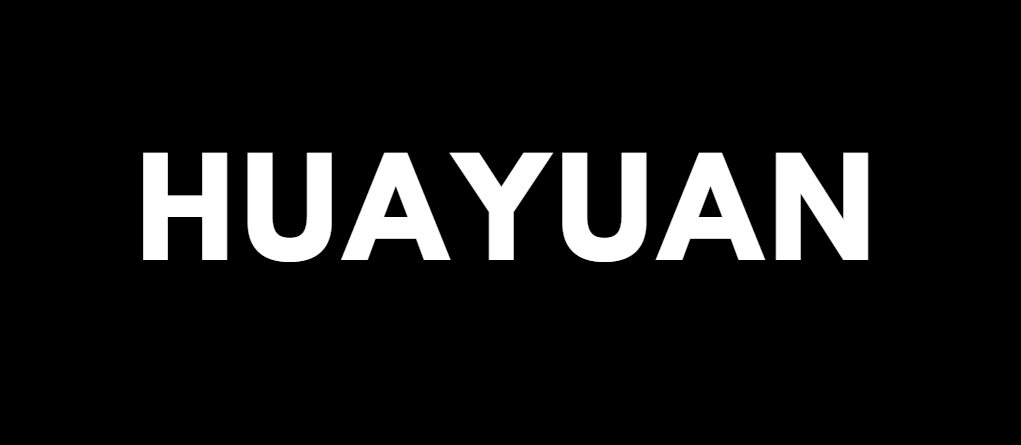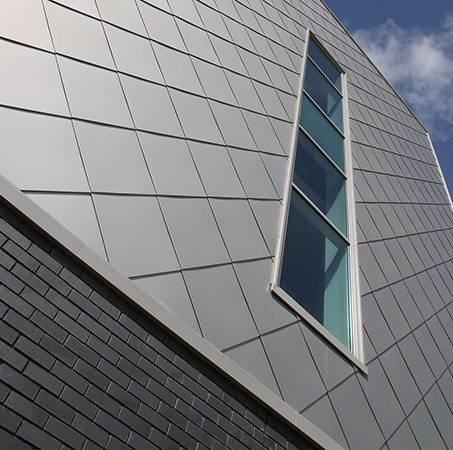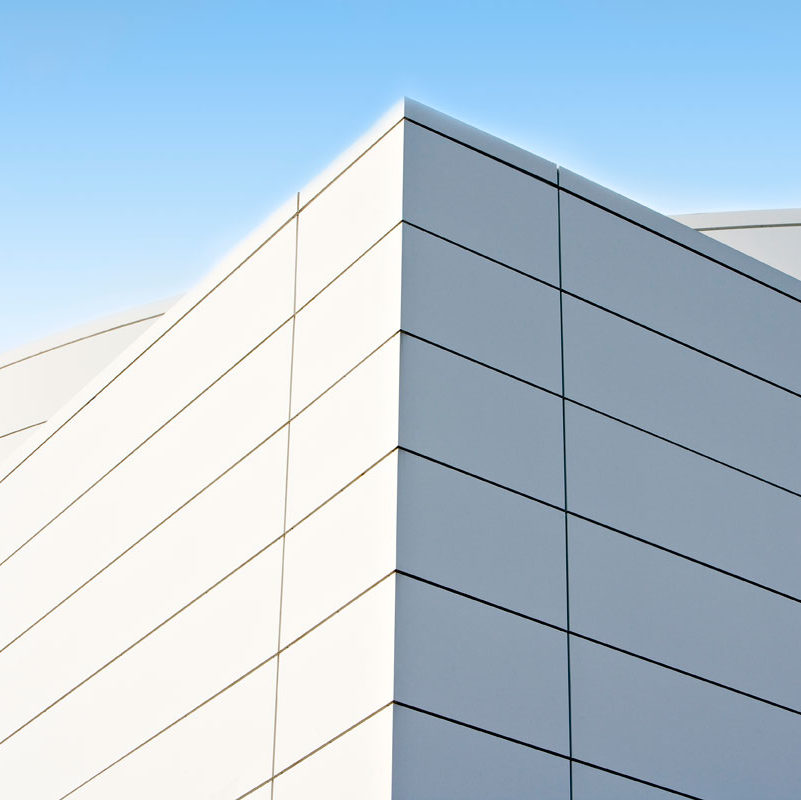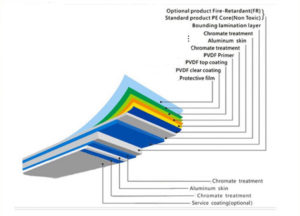Introduction to Process of Production
Chromating Line
The chromating line is to clean the lubricating grease and antioxidative grease adhesive to the surface while being rolled, and other impurities such as silicon,- magnesium, iron and copper that deposit on the surface of aluminum materials.The company uses qualified industrial chemicals and advanced technology from German Henkle co,. ltd. to have a chromating dealing with the surface of aluminum materials.Through this technology, the aluminum surface is covered with a honeycomb oxidative coating of high density,which becomes an agent to make paint and aluminum firmly adhesive with each other. This agent has very strong adhesive force.
Precision Coating Line
The precision coating line is to coat the chemisynthesized aluminum roll with various paints according to the needs of the customers. The company has an advanded three-roller reversal precision coating machine that can operate under sealed, dustless condition so that the thickness of coating and its outer appearance are under proper control.The oven is divided into four temperature-controlled areas ± 1’C to make the coating reach the best condition in its solvent resistance. hardness, flexibility and good glossiness, strong adhesive force and corrosion resistance.
Continuous Laminating Line
This is the key equipment of producing aluminum composite panel. It can make aluminum material. PE core and adhesive polyolefine film firmly adhesive to one another under high heat and high pressure so that the panel is smooth in its surface.With imported qualified adhesive Polyolefine film,advanced equipments, perfect technology and strict quality control:we have produced the aluminum composite panel whose peel strength is two times of the national standard and superior to the quality index of imported panels.
Processing Method
MED panel is very easy to process. All cutting, milling, slotting, side-folding and curving can be easily fulfilled by simple tools used for processing timber and metal. It can be shaped into various shapes, such as curve, reserve curve, curve corner and sharp curve,according to requirements of building design. It is incomparable for other decorating materials. Normal aluminum product processing machinery and wood product processing machinery can be used for processing of MED panel without special device.
| Saw Cutting |
It can be easily processed with wood product processing saw and plate saw. It’s recommended to use hard alloy blade. |
| Slotting |
It’s important to make the V type slotting process with a distance of 0.2-0.4mm from the polyethylene substrate. The recommended slot angle is 110.
· (1)milling machine and trimmer Use the modified drill as showed in the left chart. Running speed:20000-30000rpm Feed speed:3-5m/min Material: hard alloy
· (2)When processing large quantity of V type slots, it’ s recommended to use round saw and belt saw. And the following is an example of slotter:
· material: hard alloy flake
· outer diameter:305mm
· number of teeth:24
· running speed:3000-5000rpm
· feed speed:5m/min |
| Bending with panel folder |
If operated on the platform, bending part can be made very tidy |
| Bending with panel bender |
When plate folder is used to finish the MED panel, dies shall be placed on with appropriate radius |
| Bending with 3-roller panel bender |
3 – roller panel bender is more preferable for bending of large internal diameter to plate folder. |
| Riveting |
Countersunk rivet can realize easy |
| Bolting |
Considering from deformation limit, formulae>2D is the best calculation way of aperture D and distance from hole centre to plate end. |
Aluminium Composite Panel Specification
Standard Specifications
- 1250mm, 1550mm (Width)
- 3mm, 4mm, 5mm (Thickness)
- 0.3mm, 0.4mm, 0.5mm (Aluminium Skin Thickness)
Standard Color
Special Size
- (Thickness) : 2mm, 5mm, 6mm
- (Width) : 1000mm, 1250mm, 1550mm, 2000mm
- (Length) : <6000mm
Special Color
Application
- Wall Curtain
- Repaired Building
- Advertising plate, signage, show plate form
Nano Self Cleaning Aluminium Composite Panel
| Panel Thickness |
3mm,4mm.5mm,6mm |
| Panel Width |
1000mm,1220mm,1250mm,1350mm,1500mm,1570mm |
| Panel Length |
2440mm-5800mm,or per customer’s request |
| Alu. Skin Thickness |
0.25mm,0.30mm,0.35mm,0.40mm,0.45mm,0.50mm |
| Standard Size |
1220(W) ×2440(L)mm |
| Core |
Normal PE core |
Features
As a result of its low coating tension, the dust is difficult to adhibit on the surface of the panel. It
can be easily rushed away by little rain. This could save you a lot of time cost and labor cost for
wall panel cleaning.
Environment protection
Super aging resistance, no coating change, no pollution, anti-acid, anti-alkali, solvent resistance.
Durable
The Nano aluminium composite panel is more durable, and has advantages like weather resistance,
temperature resistance, friction resistance, pollution resistance, and aging resistance comparing with traditional PVDF Panel.
Nano (PVDF) ACP Parameter
| Testing Item |
Standard |
Result |
| Unit weight |
ASTM D792 |
T4mm=5.5kg/m2 |
| Thermal expansion |
ASTM D696 |
24-28 |
| Thermal deformation temperature |
ASTM D648 |
115℃ |
| Thermal conduction |
ASTM 976 |
0.102kcal/m.hr℃ |
| Flexural rigidity |
ASTM C393 |
14.0*10∧5 |
| Impact resistance |
ASTM D732 |
1.640kgf |
| Adhesive strength |
ASTM D903 |
0.77kg/mm |
| Flexural elasticity |
ASTM D790 |
4032kg/mm2 |
| Shear resistance |
ASTM D732 |
2.7kgf/mm2 |
| Fire propagation |
ASTM E84 |
QUALIFIED |
| Wind-pressure resistance |
ASTM E330 |
PASS |
| Properties against water |
ASTM E331 |
PASS |
PVDF Coating
| Testing item |
Standard |
Result |
| Finish coat thickness |
ISO 2360(CNS 8406)° |
27.6 m |
| Gloss |
ASTM D532-89 |
20~45% |
| Pencil hardness |
ASTM 03363-00 |
2H |
| Toughness |
ASTM 04145-83 |
2T no rift |
| Adhesive force |
ASTM 3359-97 |
4B |
| Impact resistance |
ASTM D2794-93 |
>100kg.cm |
| Abrasion resistance |
ASTM D968-93 |
64.6 L/mil |
| Mortar resistance |
ASTM 605.2-90 |
24 Hrs pat test exceed |
| Humidity resistance |
ASTM D714-97 |
3000hr No blister |
| |
ASTM 02247-02 |
|
| Boiling-water resistance |
ASTM 03359-B |
Passed |
| Salt-spray resistance |
ASTM D117-03 |
3000hr No blister |
| Acid resistance |
ASTM D1308-87 |
No Effect |
| |
AAMA 605.2-91,TEST#7,7.31 |
|
| Alkali resistance |
ASTM D1308-87 |
Passed |
| Solvent resistance |
ASTM 02248-73 |
Passed |
| |
ECCA T5&NCCA NO.11-18 |
|
| Color retention |
ASTM D2244-93 |
E=0.34 |
| Chalk resistance |
ASTM D4214-98 |
No Chalking |
| Gloss retention |
ASTM D2244-93 |
84.2% |
| Unit weight |
ASTM D792 |
t3mm=4.6kg/m2 t4mm=5.5kg/m2 |
| Outdoor temperature resistance |
ASTM D1654 |
No abnormity |
| Thermal expansion |
ASTM D696 |
3.0×10-5˚C -1 |
| Thermal deformation temperature |
ASTM D648 |
115˚C |
| Thermal conduction |
ASTM 976 |
0.102Kcal/m.hr˚C |
| Flexural rigidity |
ASTM 0393 |
14.0×10^5 |
| Impact resistance |
ASTM D732 |
1650kgf |
| Adhesive strength |
ASTM D903 |
0.74kgfimm |
| Sound-insulating rate |
ASTM E413 |
29 |
| Flexural Elasticity |
ASTM D790 |
4055kg/mm^2 |
| Shear resistance |
ASTM D732 |
2.6kgf/mm^2 |
| Minimum bending radius |
ASTM D790 |
>300mm |
| Fire propagation |
ASTM E84 |
Qualified |
| Smoke developed |
ASTM E84 |
<45 |
| Wind-pressure resistance |
ASTM E330 |
Passed |
| Properties against water |
ASTM E331 |
Passed |
| Properties against air |
ASTIV1E283 |
Passed |





